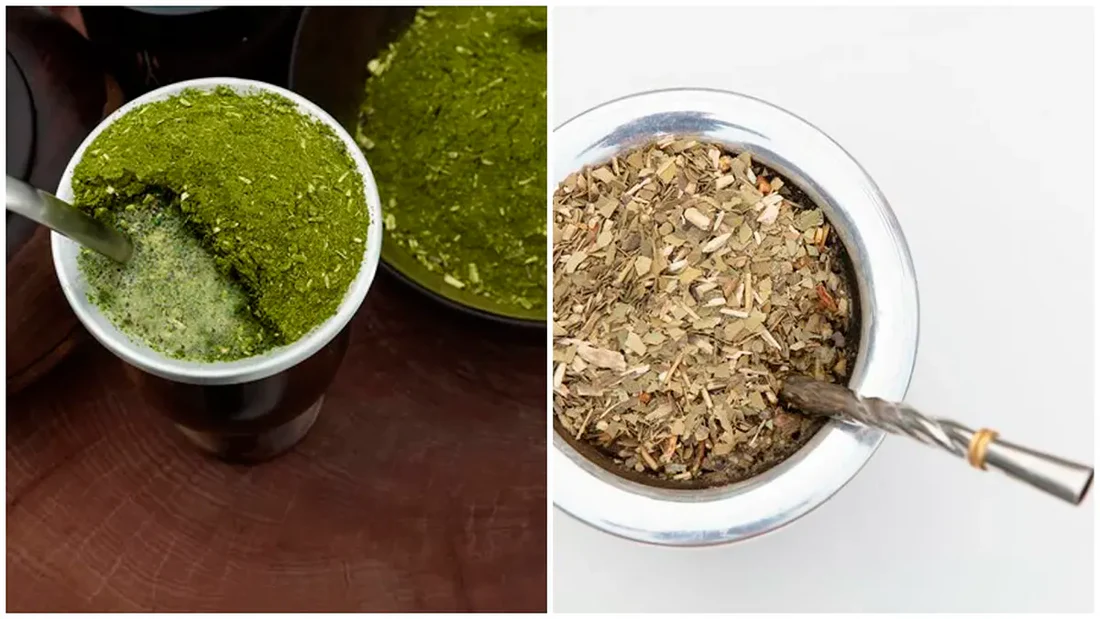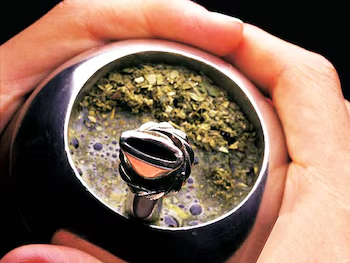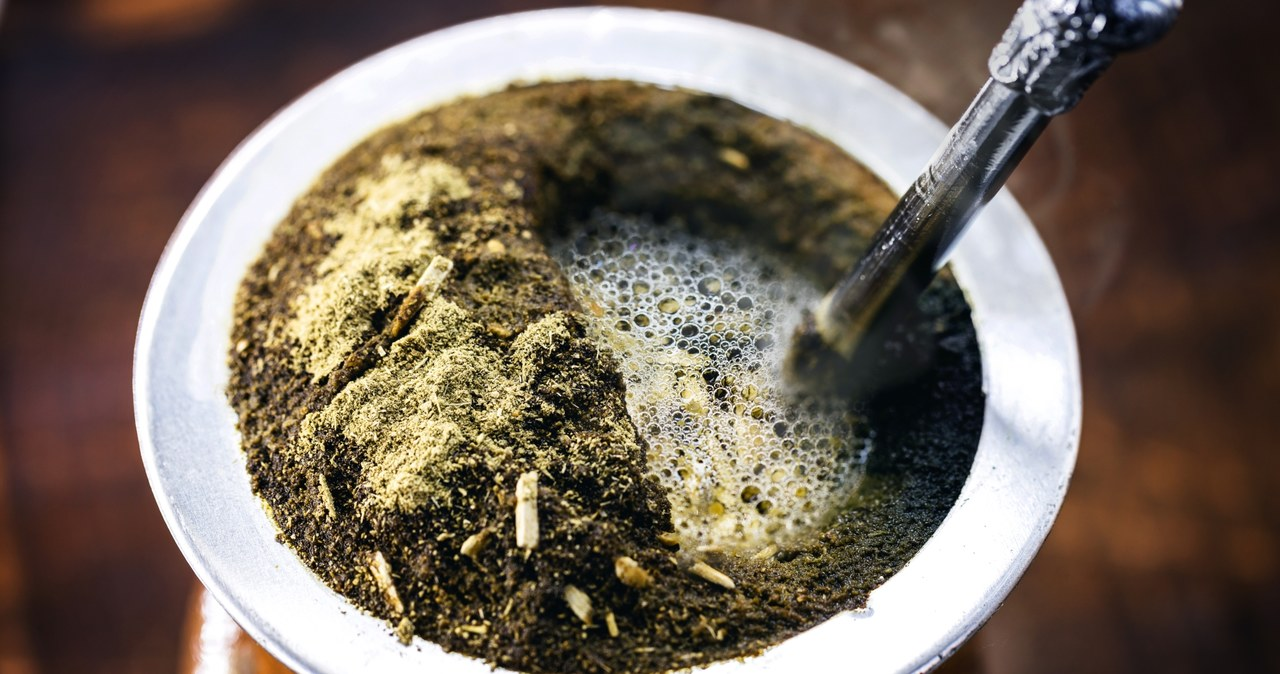Argentine yerba mate vs. brazilian yerba mate (chimarrão): key differences and how to choose the right one for you

Argentine yerba mate or Brazilian? Although both come from the same plant, chimarrão and Argentine yerba mate offer unique experiences. One is bright green, intense, and finely ground, while the other is smooth, toasted, and balanced. Discover their key differences and find out which one best suits your taste.
Origin and similarities between Argentine yerba mate and chimarrão
-The same plant: Both Argentine yerba mate and Brazilian chimarrão come from the same botanical species, Ilex paraguariensis. This plant is native to the Atlantic Forest (Selva Paranaense), which spans southern Brazil, Paraguay, and northeastern Argentina (mainly Misiones and part of Corrientes).
-Shared cultural roots: The Guaraní people were the first to harvest and consume yerba mate. Later, in the 17th century, Jesuit missions standardized its cultivation and spread throughout the region, embedding the habit into daily life.
-A shared social ritual: Although the names differ — mate in Argentina and chimarrão in Brazil — the social act is similar: a hot infusion prepared in a container (gourd, wood, or modern materials) and drunk through a metal straw (bombilla in Argentina, bomba in Brazil). Sharing, passing the mate, and conversing are part of the same cultural code in the Río de la Plata region and southern Brazil.
-Basic processes in common: Both traditions start with comparable steps: harvesting leaves and branches, drying/heat treatment to stop oxidation, and grinding. Each country then applies its own techniques, but the initial production stage is similar.
-Similar composition and effects: Since they come from the same plant, both contain caffeine, theobromine, and antioxidants. This gives them a moderate stimulating effect and similar benefits for keeping you alert and energized.
-Terminology: In Brazil, “erva-mate” refers to the raw material and “chimarrão” to the beverage; in Argentina, it’s “yerba mate” and “mate.” The name and appearance may change, but the botanical and cultural base is the same.
Key differences in flavor, grind, and appearance
Chimarrão (Brazil)

-Color: Very bright, vibrant green, thanks to minimal aging and higher chlorophyll retention.
-Grind: Extremely fine (flour-like) with a high powder content, creating a creamy texture when drinking.
-Flavor and aroma: More herbal and fresh, with mild bitterness and a silky mouthfeel.
-Flavor duration: Releases flavor quickly but can lose intensity sooner if not prepared with the right bomba.
-At a glance: Fine, uniform powder in bright green color, with no visible stems.
Argentine yerba mate

-Color: Olive green with yellow or toasted hues, the result of natural or accelerated aging (from 9 to 24 months).
-Grind: Balanced cut with leaves, stems, and powder (depending on type: con palo or stemless).
-Flavor and aroma: Rounder profile, with toasted notes and more body; medium to intense bitterness depending on the blend.
-Flavor duration: Maintains flavor more consistently over multiple servings, especially in con palo versions.
-At a glance: Chopped leaves, small stems, and moderate powder, with a more muted, earthy color.
Preparation method and type of container
Brazilian yerba mate (chimarrão)

-Container: Traditionally served in a cuia, a large mate made of gourd, wood, or modern materials.
-Straw: Called bomba, with a wide, flat filter at the base to prevent clogging from the fine powder.
-Preparation:
1- Fill the cuia almost completely with chimarrão.
2- Tilt to create an empty space on one side.
3- Add a small amount of warm (not hot) water to moisten the yerba.
4- Insert the bomba and then pour hot water at 70°C–80°C (158°F–176°F), avoiding boiling water to prevent burning the yerba.
-Unique trait: Chimarrão uses a large amount of yerba and is consumed in quick servings; the creamy foam is part of its appeal.
Argentine yerba mate

-Container: Smaller mate made of gourd, wood, horn, or stainless steel.
-Straw: Finer filter than the Brazilian bomba, as the grind has less powder.
-Preparation:
1- Fill the mate three-quarters full with yerba.
2- Tilt to form a hollow space.
3- Moisten with a splash of warm water at the base of the hollow.
4- Insert the bombilla and pour water at around 75°C–80°C (167°F–176°F).
Unique trait: Argentine yerba tends to yield more servings and maintain flavor longer.
Nutritional benefits and properties

Chimarrão is rich in antioxidants, especially polyphenols, which help combat cellular oxidation. It contains B vitamins, potassium, and magnesium, in amounts similar to Argentine yerba mate. Its fine grind and preparation method — using more yerba in the cuia — allow caffeine and theobromine to be released quickly, providing an energizing effect with a smooth, creamy flavor. In southern Brazil, it’s common to drink chimarrão throughout the day, even in warm weather, as a way to stay hydrated and alert.
Argentine yerba mate is also rich in polyphenols, offering a significant supply of antioxidants that support cellular protection. It contains vitamins B1 and B2, as well as minerals like magnesium and potassium. Its coarser grind allows caffeine and theobromine to be released gradually, providing sustained energy over time.
Which one should you choose?
If you prefer a smooth, fresh, and creamy taste, Brazilian chimarrão may be your best choice. Its fine grind and bright green color create a more delicate experience, perfect for those who enjoy a less bitter infusion with characteristic foam. Popular in southern Brazil, it’s an appealing alternative if you want something different from traditional mate but equally energizing.
On the other hand, if you enjoy a full-bodied flavor, toasted aroma, and more pronounced bitterness, Argentine yerba mate is the way to go. Its balanced cut of leaves, stems, and powder delivers a rounded, consistent flavor over many servings and is the most recognized version worldwide. Ideal for those who see mate as part of their daily ritual and want to extend the experience.
Both have their charm, and there’s no single right answer — it depends on your personal taste and the moment. The best approach is to try both to see which fits your palate or even alternate between them depending on the occasion.
Where to buy Argentine yerba mate with international shipping
If you want to enjoy the best Argentine yerba mate anywhere in the world, Pampa Direct offers more than 100 varieties from the country’s top brands. Choose from traditional with stems (con palo), stemless (sin palo), organic, mild, and flavored blends, all with worldwide shipping to over 60 countries.
And it’s not just yerba mate — at Pampa Direct you’ll also find over 10,000 typical products from Argentina and Uruguay, from mates and bombillas to alfajores, chocolates, kitchenware, soccer jerseys, books, and cosmetics. All in one place, with the convenience of shopping online and receiving your order right at your doorstep.
Recent Posts
-
Armá tu mesa navideña con productos argentinos con envíos a todo el mundo
Se acercan las fiestas y, si sos argentino viviendo en el exterior, no tenés por qué dejar de lado l …4th Dec 2025 -
Set your holiday table with classic Argentine products with worldwide shipping
The holidays are coming up fast, and if you’re Argentine and living abroad, you don’t have to settle …2nd Dec 2025 -
Pan de miga en Estados Unidos y Canadá: cómo conseguirlo para hacer sándwiches de miga con envío internacional
El pan de miga (también conocido como pan sin corteza o pan para sándwiches finos) es la base del sá …27th Nov 2025
